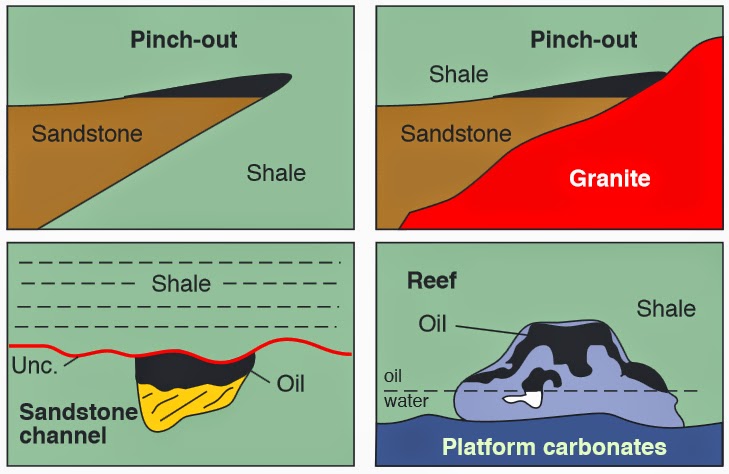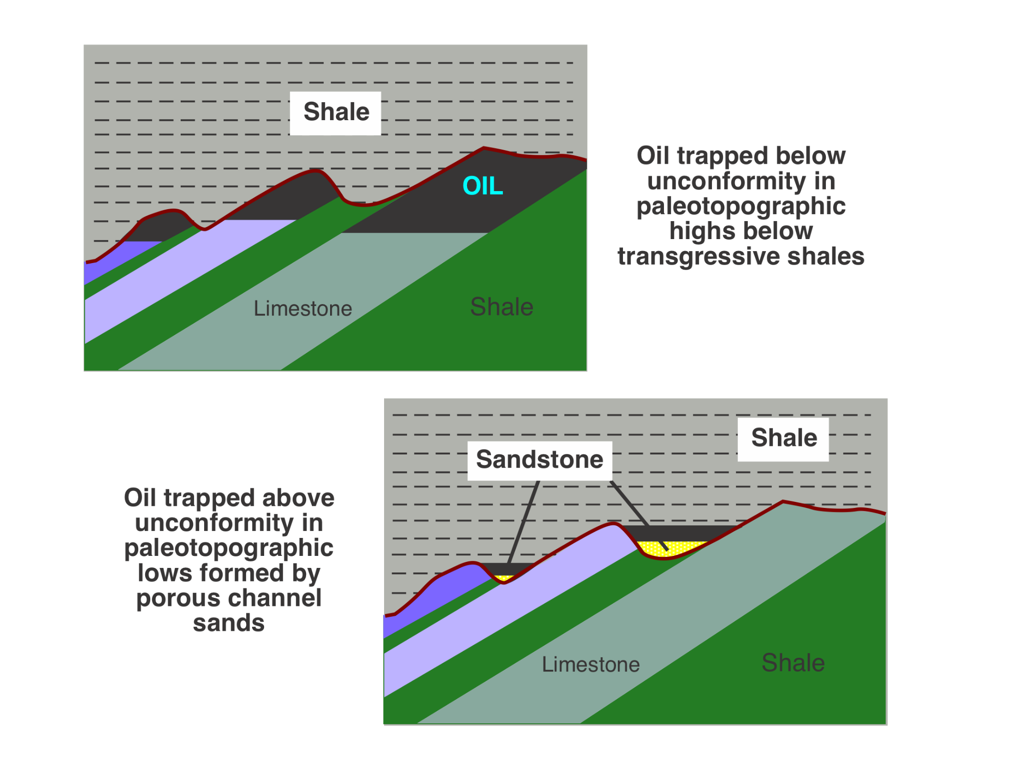|
Stratigraphic trap
A second major class of oil traps is the stratigraphic trap. It is related to sediment deposition or erosion and is bounded on one or more sides by zones of low permeability. Because tectonics ultimately control deposition and erosion, however, few stratigraphic traps are completely without structural influence. The geologic history of most sedimentary basins contains the prerequisites for the formation of stratigraphic traps. Typical examples are fossil carbonate reefs, marine sandstone bars, and deltaic distributary channel sandstones. When buried, each of these geomorphic features provides a potential reservoir, which is often surrounded by finer-grained sediments that may act as source or cap rocks. Sediments eroded from a landmass and deposited in an adjacent sea change from coarse- to fine-grained with increasing depth of water and distance from shore. Permeable sediments thus grade into impermeable sediments, forming a permeability barrier that eventually could trap migrating petroleum. There are many other types of stratigraphic traps. Some are associated with the many transgressions and regressions of the sea that have occurred over geologic time and the resulting deposits of differing porosities. Others are caused by processes that increase secondary porosity, such as the dolomitization of limestones or the weathering of strata once located at the Earth’s surface. -Result of lateral and vertical variations in the thickness, texture, porosity or lithographic of the reservoir rock Examples of this type of trap are an unconformity trap, a lens trap and a reef trap |
AUTHOR/EDITOR
Pattanan Thamrujikul
|
Two group can be catagorized
Primary Stratigraphic
result from variations in facies that developed during sedimentation. These include features such as lenses, pinch-outs
- Primary pinch out of strata that pinch out updip in less permeable rocks such as shale
- Fluvial channels of sandstone that are isolated and surrounded by impermeable clay-rich sediments
- Submarine channels and sandstone turbidites in strata rich in shale
- Porous reefs that are surrounded by shale

Secondary Stratigraphic
result from variations that developed after sedimentation, mainly because of diagenesis.
Paleogeomorphic traps are controlled by buried landscape. Some are associated with prominences (hills); others with depressions (valleys). Many are also partly controlled by unconformities so are also termed unconformity traps.

